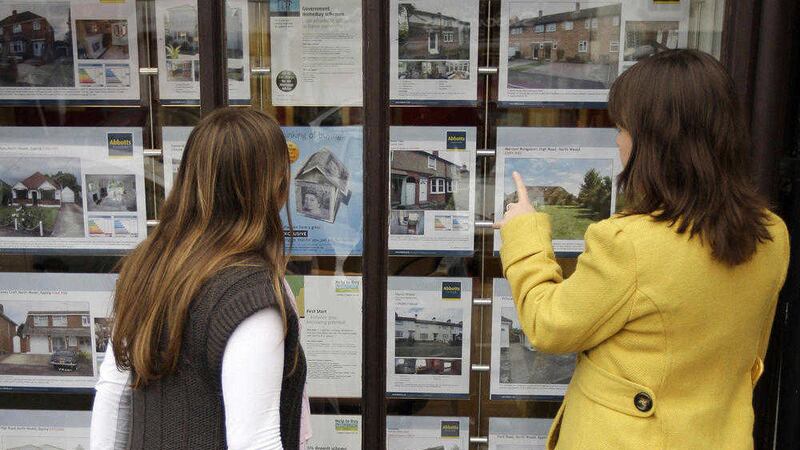HINDSIGHT – the best sight – is a great thing. If we had only known Leicester City were 5,000/1 to win the Premier League, I'm sure many of us would have taken a small punt!
When we look back at the banking crisis of 2008, how could we not have spotted that 100 per cent-plus mortgages and escalating property prices were a recipe for disaster.
But we are not experts – it’s the bankers and politicians who are supposed to control that world. The UK had a Prime Minister, a former chancellor, Gordon Brown, whose call sign at the dispatch box was that he had ended “boom-and-bust”.
Sadly, history has decided that is not possible. In 2008 the world – not just the UK – entered the biggest financial collapse since the Great Depression of 1928 and the economic situation has still not fully recovered after eight years.
The one area that has bounced back and even flourished – though not everywhere in the UK – is property. Could this revival bring its own dangers?
Some are wondering whether we are beginning to forget the lessons of the recent past, highlighted by the return of 100 per cent mortgages. Mortgage-age restrictions are being loosened, too.
The Nationwide has recently raised the maximum age limit for its mortgages from 75 to 85; this makes it the highest of any major lender, beating the Halifax’s recent increase by five years.
There are restrictions, of course. The oldest you can be to get a Nationwide mortgage is 80, it will run for five years, loan are up to £150,000 and can only be at a maximum of 60 per cent of the value of the property.
Your independent financial adviser (IFA) will tell you that this is prudent lending by the Nationwide – and sensible borrowing by you.
The older generation has been struggling since the Mortgage Market Review (MMR) came into play two years ago, when “affordability” became the watchword and the major lenders imposed inflexible age restrictions – despite the assets and income of many of those grey-haired borrowers.
Making mortgage life easier for those of a certain age makes sense, as does the return of 95-100 per cent mortgages – provided, that is, the lenders stick rigidly to their “affordability” rules and no lender goes above the 100 per cent mark.
The new Barclays 100 per cent three-year fixed-rate (2.99 per cent) mortgage comes with some conditions, as well as the usual “affordability” tests. (4)
The bank requires family or friends to put 10 per cent of the home’s value into a Barclays’ savings account for those first three years. At the end of that time the money is returned, plus interest (1.5 per cent above Bank of England base rate).
Many youngsters, eager to get on the property ladder, tend to struggle as much – or even more – raising the required deposit as passing the “affordability” tests.
Another recent Barclays change is that buyers earning more than £50,000 per annum can borrow up to 5.5 times their salary, rather than 4.4!
Those changes by Barclays will certainly increase the numbers able to get on to the housing ladder – but will it continue to fuel the rise in prices? There is a shortage of property and it will increase the numbers chasing each house or flat.
Perhaps the most disturbing recent research came from the insurance company LV, that revealed “gazumping” had been the reason in more than 20 per cent of the sales that collapsed in the year to April.
Gazumping comes when a seller has agreed a price, but decides to accept a higher offer before exchange takes place.
Amazingly, around £270 million a year is wasted on legal fees and surveys for failed house purchases in England & Wales alone, according to the government.
One in seven purchases failed because the vendor pulled out and over half because of delays in the conveyancing process. Around three to four months is now the typical time to buy a home here, much longer than in Europe.
Those purchasing buy-to-let purchases find the process much easier – often, there is no property to sell and no chain.
House prices did fall in April, according to the Halifax UK index, by 0.8 per cent – but that was no surprise after the rush in the first three months of 2016 to buy that second home before the chancellor’s penalty – 3 per cent extra on stamp duty – came in at the start of April.
There is still no sign of an interest-rate rise and mortgage rates are at record lows. Those genuinely worried about a property crash (or correction) can fix their loan – for a period of two, three, five or even ten years.
The UK property market has recovered pretty well in most areas. Lending is governed by affordability – and the key factor in pushing up prices is the lack of supply, not owners simply looking to make a quick buck!
:: Darren McKeever (dmckeever@ wwfp.net) is Northern Ireland adviser of Worldwide Financial Planning, which is authorised and regulated by the Financial Services Authority. For a free, no obligation initial chat about your individual finances, call 028 68632692, e-mail info@ wwfp.net or click on www. wwfp.net. Follow us on Twitter: @WorldwideFP.








